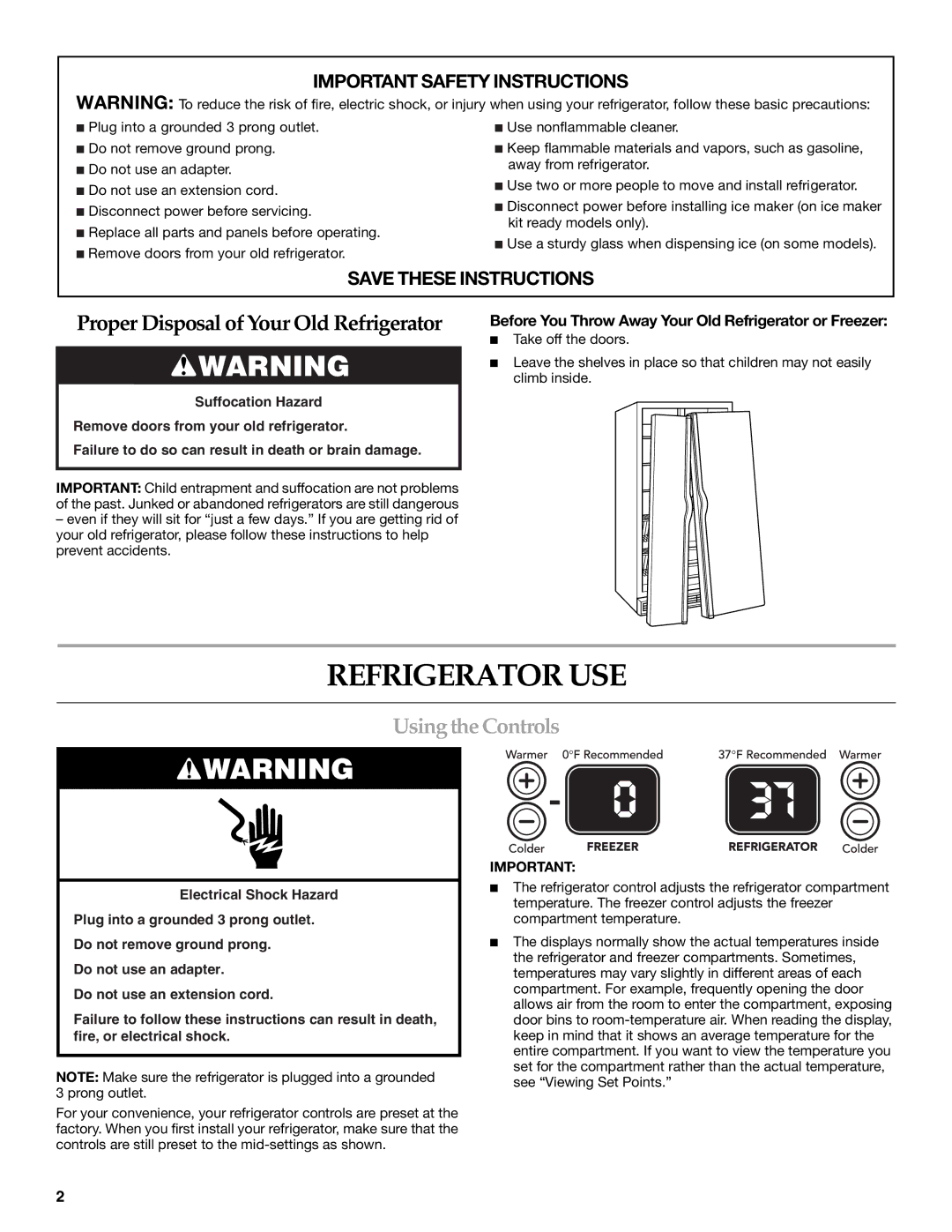
IMPORTANT SAFETY INSTRUCTIONS
WARNING: To reduce the risk of fire, electric shock, or injury when using your refrigerator, follow these basic precautions:
■ Plug into a grounded 3 prong outlet. | ■ Use nonflammable cleaner. | |
■ Do not remove ground prong. | ■ Keep flammable materials and vapors, such as gasoline, | |
■ Do not use an adapter. | away from refrigerator. | |
■ Use two or more people to move and install refrigerator. | ||
■ Do not use an extension cord. | ||
■ Disconnect power before installing ice maker (on ice maker | ||
■ Disconnect power before servicing. | ||
kit ready models only). | ||
■ Replace all parts and panels before operating. | ||
■ Use a sturdy glass when dispensing ice (on some models). | ||
■ Remove doors from your old refrigerator. | ||
|
SAVE THESE INSTRUCTIONS
Proper Disposal of Your Old Refrigerator
Before You Throw Away Your Old Refrigerator or Freezer:
■Take off the doors.
![]() WARNING
WARNING
Suffocation Hazard
Remove doors from your old refrigerator.
Failure to do so can result in death or brain damage.
IMPORTANT: Child entrapment and suffocation are not problems of the past. Junked or abandoned refrigerators are still dangerous
–even if they will sit for “just a few days.” If you are getting rid of your old refrigerator, please follow these instructions to help prevent accidents.
■Leave the shelves in place so that children may not easily climb inside.
REFRIGERATOR USE
Using the Controls
![]() WARNING
WARNING
Electrical Shock Hazard
Plug into a grounded 3 prong outlet.
Do not remove ground prong.
Do not use an adapter.
Do not use an extension cord.
Failure to follow these instructions can result in death, fire, or electrical shock.
NOTE: Make sure the refrigerator is plugged into a grounded 3 prong outlet.
For your convenience, your refrigerator controls are preset at the factory. When you first install your refrigerator, make sure that the controls are still preset to the
IMPORTANT:
■The refrigerator control adjusts the refrigerator compartment temperature. The freezer control adjusts the freezer compartment temperature.
■The displays normally show the actual temperatures inside the refrigerator and freezer compartments. Sometimes, temperatures may vary slightly in different areas of each compartment. For example, frequently opening the door allows air from the room to enter the compartment, exposing door bins to
2
